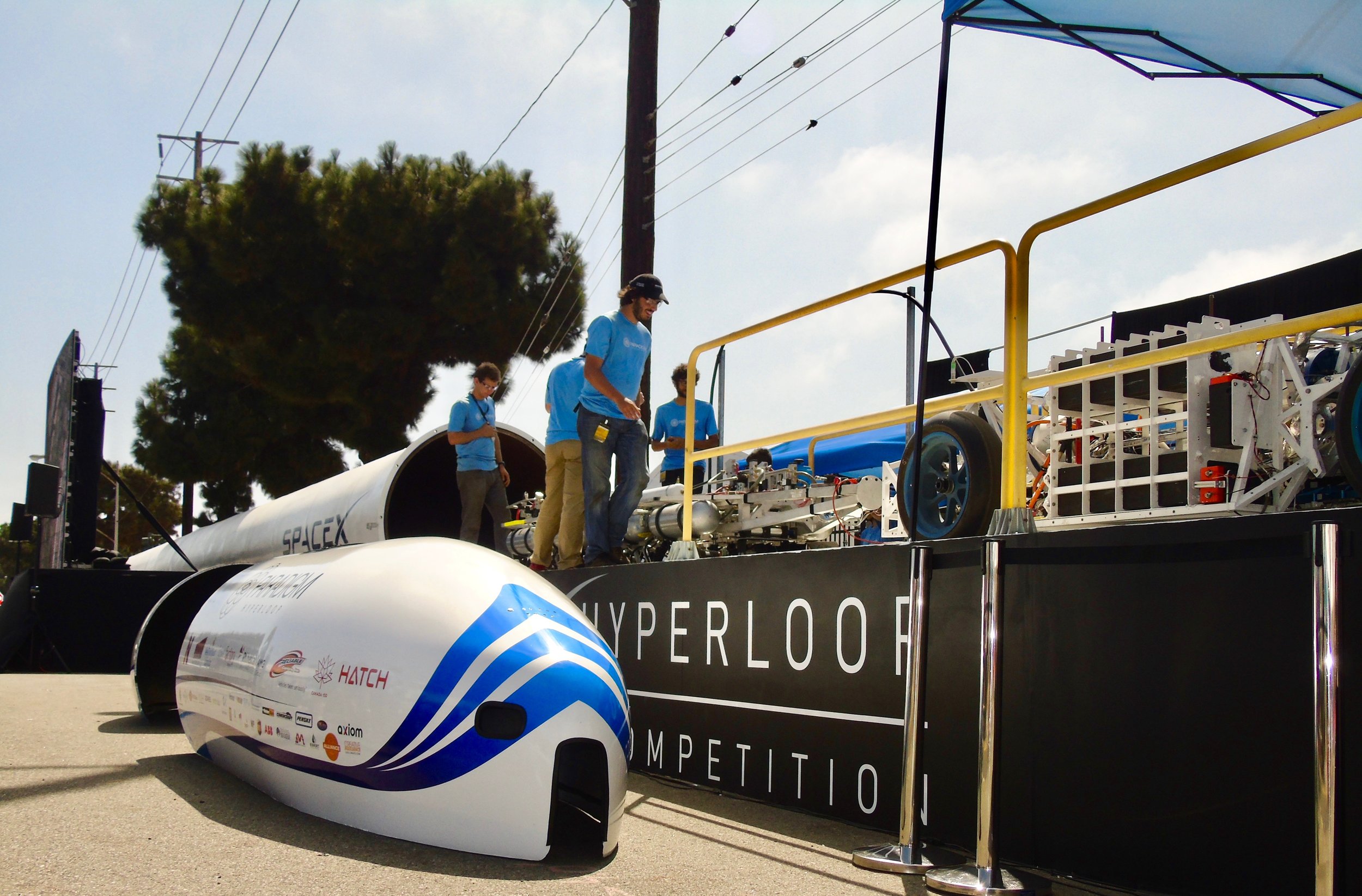Paradigm
Paradigm Hyperloop
January - August 2017
SpaceX is revolutionizing terrestrial transportation through its Hyperloop services. The company currently provides these services to innovators and universities across the world interested in high-speed transportation technology and solutions. The Hyperloop system built by SpaceX at its headquarters in Hawthorne, California, is approximately one mile in length with a six foot outer diameter.
SpaceX announced the Hyperloop Pod Competition in 2015. The competition’s goal is to support the development of functional prototypes and encourage innovation by challenging student teams to design and build the best high-speed Pod. The first three competitions were held in January 2017, August 2017, and July 2018, and were the first of their kind anywhere in the world.
I became involved in Northeastern’s hyperloop team in April of 2016, and spent the rest of that year voraciously learning the ins and outs of the aerospace and automotive engineering involved in a project of this type. After testing successfully at the January 2017 competition, we decided to redesign and retrofit nearly all of our vehicles systems from the ground up to be lighter, safer, and more effective.
I was responsible for the design and implementation of a new and improved braking system. Navigating budget constraints and manufacturing limitations while still meeting the design requirements of stopping the 1,800lb vehicle from 185 mph was certainly a challenge.
We figured out design constraints and performance requirements for the system and then worked back from there brainstorming designs and researching components. Our initial design involved braking about the vertical web of the rail, but due to packaging constraints introduced by the new suspension system we later transitioned to a topology that clamped onto the top flange.
Because of the dynamics of such a large vehicle and the tight tolerances to the rail required for a compact and effective braking system, a method needed to be devised to decouple the brakes from the vehicle in all but the direction of deceleration (-x). After exploring designs with linear roller bearings, ball-and-socket linkages, and large nylon ropes, we came to our final design of mirrored 4-bar linkages, which allowed for 1 main degree of freedom vertically, with some lateral flexibility due to linkage construction. The linkage arms had opposing "turnbuckle-style" threads on each end, which allowed for fine adjustment of each link length to align each module with the rail.
The modules were constrained to the rail laterally using rollerblade wheels with eccentric bushings (for adjustability), and vertically with skateboard wheels. The 50 lb modules were each suspended from the frame with nylon shock cords, which reduced the load on the vertical wheels to about 5 lbs, which was much more manageable at the 30,000 rpm that they would see at the design speed of 185 mph.
We selected 4" pancake cylinders to actuate the pads, and the frictional load (bending load on pistons) was supported by spring-loaded self-aligning linear PTFE sleeve bearings on precision ground shafts.
The attachment to the pod chassis was designed with ease of installation and removability in mind, and took advantage of "drill template" mounting blocks with compliant shims, allowing for the crossbars to be dialed in to parallel, improving the likelihood of success of the in-situ retrofit.
Throughout the design process, we did a lot of quick structural FEA studies to check our designs and inform material selections, and then ultimately did a thorough final analysis suite for the safety package submitted to SpaceX. We put particular care into the parts that were not easily tested under their full dynamic loads or that did not have manufacturer specifications for our particular use case - the heat-treated steel housing and the Wilwood Polymatrix Q brake pads.
Being on an internship over the summer as well, I was not able to help out during the day with manufacturing, which made for an opportunity to create really effective manufacturing drawings for the 11 unique manufactured parts.
All the parts got machined, assembled, tested, and integrated onto the vehicle in 4 weeks, in time for full system testing and shipping to LA for the competition.
The brakes worked as designed during our high-speed run, awarding us 2nd place internationally. We were accelerated to 63 mph by SpaceX before coasting on our levitation system and activating the brakes, slowing the 1,800 lb vehicle to a controlled stop at 1G.
In addition to designing the braking system, I played a key role in coordinating the efforts of the mechanical and electrical teams to ensure things worked seamlessly, contributed to safety documentation of Standard Operating Procedures, and led all high-pressure fill operations on SpaceX property.

















